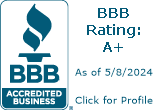Retirement investment fraud is real but fortunately avoidable through a combination of awareness and due diligence. You may think that you can spot a scammer’s sales pitch from a mile away, but you can never let your guard down.
Protect Your Retirement by Avoiding Investment Fraud
When it comes to retirement accounts with large monetary values, scammers and fraudsters specifically hone their sales pitch to appeal to college-educated, optimistic people. They are fully aware that these people have higher incomes and financial knowledge. Fraudsters will take money from everyone they can con out of it but the SEC states they target this demographic group:
- Male
- 55-65 years old
- More financially literate
- College-educated
- A recent change in financial or health status
- Higher-income
- Risk-takers
The good news is that a Financial Industry Regulatory Authority (FINRA) study found that almost half of all people (47%) immediately spotted a swindle and disengaged without hearing the fraudster out. Another 30% listened to the fraudster, but stopped short of becoming a victim. The unsettling finding from the study is that 23% did become victims.
Common Tactics and Schemes
Some fraud schemes are so prevalent (and successful) the perpetrators repeat them time and time again. Although the specific investment opportunity changes, fraud techniques are repeated to the point that the schemes have become categorized with these names and descriptions.
“Phantom Riches.” Known for offering big payoffs and “guaranteed” returns. The strategy is to offer you something you want but can’t have. A commonly cited example is “gas wells guaranteed to produce $6,800 a month in income.” Common red flags include “it sounds too good to be true,” and “guaranteed returns.” You might hear “you need to make the decision and send the money RIGHT NOW.” This scheme is generally based on a false sense of urgency or limited time to act.
“Source Credibility.” This when the fraudster builds credibility by appearing successful, claiming affiliation with a reputable organization, or touting a special credential or experience. They use phrases like “as a senior vice president of the Big Winner Firm, I would never sell an investment that doesn’t produce.” This is a form of the “A Wolf in Sheep Clothing” fable. The main red flag is when the person is striving too much to be likable and/or trustworthy. These fraudsters often work by building trust inherent in groups of like-minded individuals. They may use a false claim like “this investment made hundreds of people extremely wealthy.”
Other Investment Fraud Schemes To Avoid
“Social Consensus.” This one has something in common with “source credibility” by trying to appeal to groups and like-minded individuals. Invalidated claims are made such as “hundreds of savvy investors have already invested.” Perpetrators might make claims that large numbers of validated people are investors. Common examples include “half of my mother’s church is in on this.” A key red flag is being introduced by a friend (especially someone that you won’t otherwise look to for investment insights).
“Scarcity.” This is another one that attempts to create a false sense of urgency. They want you to act before having the opportunity to think about what you’re doing. A key red flag is a fraudster building pressure that you’ll lose the opportunity to earn a big return on an investment if you don’t take action despite having reservations.
“Reciprocity.” This involves offering to do something for you in exchange for you doing something for them. The favor you are doing for them is usually much bigger than the favor they do for you. A classic red flag is offering you a big break on his/her commission. Free meals and free seminars are also common tactics.
If these tactics look familiar, it’s because legitimate marketers also use them. One key difference between fraudulent and legitimate offerings is that real deals will still be there tomorrow. So always, take the time to stop and think before making a decision.
Take this quiz to see if you can spot which tactic is being used in different scenarios.
Tactics to Avoid Retirement Investment Fraud
Simply saying “No” is your number one defensive strategy. Use this when you want to end the conversation. Perhaps you’re more polite. In that case, you can simply say “I’m sorry, I’m not interested. Thank you.” If the fraudster won’t take no for an answer, your next move is saying you’ll think about it and get back to them.
Even if you decide that you want to hear more about what they have to say, never give out personal or financial information about yourself. Wait until you’ve separated yourself from the conversation and had an opportunity to perform your due diligence without the person being involved.
During a conversation, you should always turn the tables by asking a lot of questions about the person, their credentials, and provable facts about the investment. Never accept their word alone about credentials and what they claim to be facts. There are many many ways to check out their story. It might be as simple as checking with the BBB, verifying a real estate license, verifying a broker’s license with the SEC, or your state securities regulator. You can begin with a google search using the company (product) name and words like “review,” “complaint” or “scam.” Insist on taking time to talk to an accountant, lawyer, investment adviser, family member, etc.
Be extremely skeptical if the person makes a claim or statement about keeping the investment secret. A legitimate professional will not ask you to keep secrets. Refuse to be rushed and never feel obligated.
Steps to Protect Yourself
Other steps you can take are:
- Activate security features for your accounts.
- Activate two-step authentication to access the accounts online.
- Use notifications with text message notification for withdrawals.
- Opt-out of mailed paper statements that fraudsters can intercept.
- Reduce your liquidity after retirement. Fraudsters often target money in checking and savings accounts. Have your Solo 401k and retirement pension make only periodic electronic transfers to your bank account.
- Use more than one bank account in different banks or institutions. This way, if one account or institution is compromised, the money in the other account is safe.
- Consider a “springing” power of attorney where you specify exactly how and under what circumstances the power of attorney springs into effect. Typically, it is triggered by legal, financial, and health care factors.
- To reduce the number of sales pitches you receive, use the Federal Trade Commission’s National Do Not Call Registry.
- Check out: Questions You Should Ask About Your Investments.
Overall, before making any investments always ask critical questions. But above all, figure out whether the product is right for you and always fully understand the terms and conditions of what you are buying.





